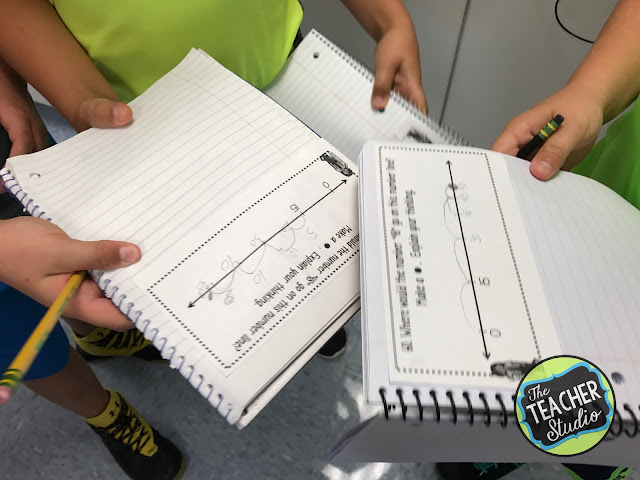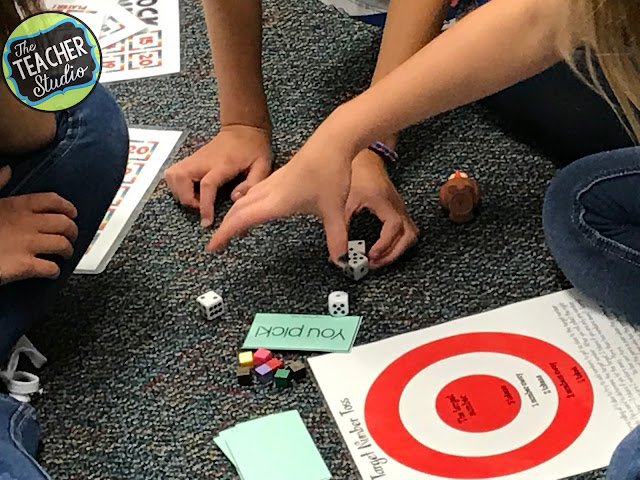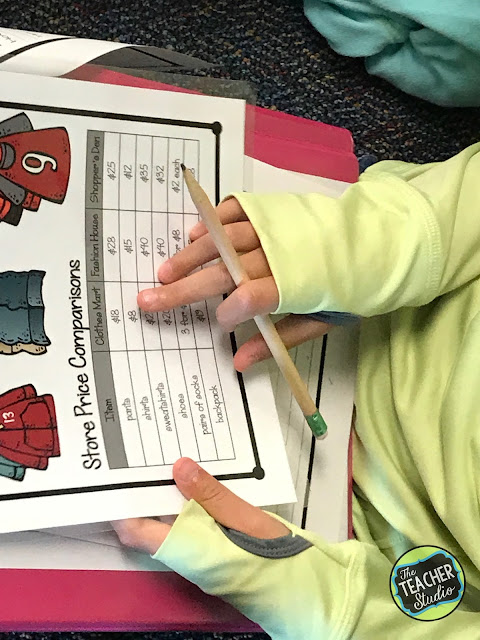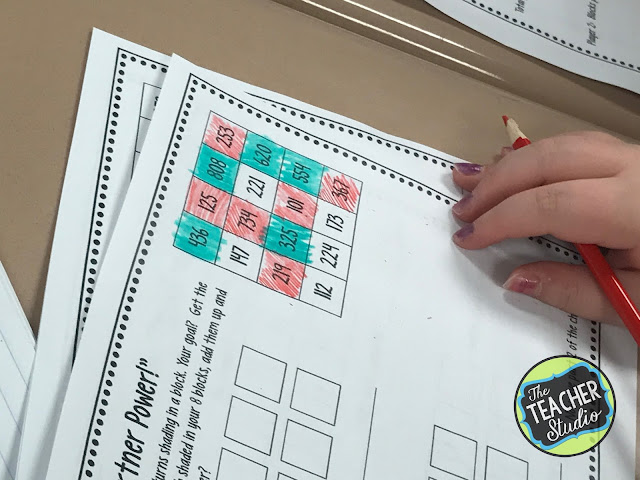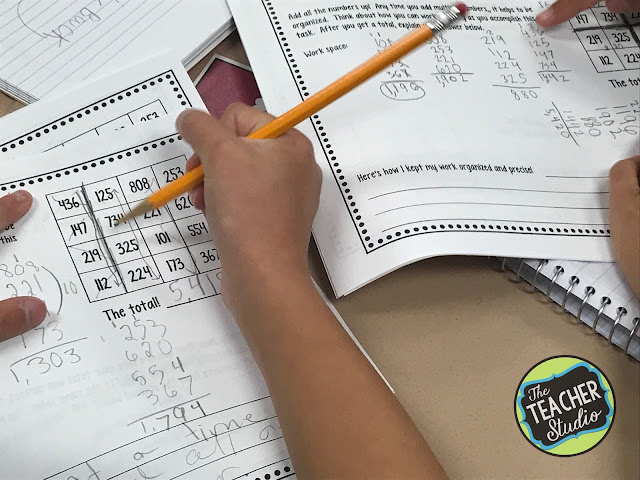But don’t students need to work accurately and with precision? Isn’t the right answer important?
Now don’t get me wrong–I’m not talking about accuracy and precision problems! Do I think students should know their facts and compute precisely? Yep. But I also truly believe that many students tend to equate THOSE math activities as the most important.
One of the first discussions I have each fall is that math is complicated. Much like reading is more than “saying the words”, math is more than getting the right answer. We talk about growth mindset…about the mathematical practices…about persevering…about how math doesn’t always happen quickly…about asking for help when needed…and all sorts of other “math behaviors” that lead to success in math. It is SO important for students to understand what I believe–and that research supports this! Once they realize what I value, it’s time to provide opportunities for students to practice these behaviors and to provide me the chance to observe and see how students handle this climate for learning. For me, helping coach students in THIS is just as important as teaching them how to add and subtract.
Math with a growth mindset
Throughout the year, I use discussion starters to get students talking and thinking about the role mindset has in learning. By exposing students to this type of conversation, it reinforces the values I have and also gives them the language to talk about their own strengths and goals. The other day, we had a GREAT discussion about this one…and were able to give tons of examples of what this might look like and what types of situations might be impacted by this. (Note: These are a part of my growth mindset resource if you are interested in seeing more.)
Collaboration, questioning, and a mathematical mindset
Another way I work to build this culture throughout the year is by helping students learn how to work collaboratively in a productive way. Learning how to ask questions, ask for help, offer help, take feedback graciously, and be willing to share ideas are all skills that not only contribute to math success–but “life” success as well! Check out these students talking about their number line work!
Using math games to coach math talk and more!
One great way to do this is to have students play games and be an outsider where you coach not just the math, but the interactions as well. This group was struggling with being patient with a student who processed more slowly so I sat behind them and coached. Not only did it help the student who was working slowly to realize that it was ok to work slowly, but I was able to work with the others to learn how to manage that situation with grace while making the other player feel valued. This Target Number Toss game is great because there is more than one way to complete each turn–and great discussions can arise!
Another thing I do to help students realize that math is more than an answer blank is to make sure we are constantly doing “work” where we NEVER even address the answer! That may seem counterproductive…after all, how will we know if they can DO the math? This is the power of shifting our focus. When I do activities such as “Thinker Tasks”, I do not always even collect them–and I certainly never share what the correct answer is. Why? Because there ISN’T one right answer! The process students use to solve the challenges is the key…and, again, the “kid watching” is where I learn the most–far more than if I simply checked for the right answer.
The importance of differentiation in math
For one thing, I can see who struggles with the math concepts. I can see how students work together–or don’t. I love using my Thinker Task project based learning tasks (PBL) to help with this. I can see which students seem to relish a challenge and which steer away. I can see if students work with care or if they rush. Also, I can see if students are independently able to dig in or if they need guidance. I can see how long they are willing to persevere or if they struggle to maintain focus. It allows me to start to notice which students gravitate toward each other to collaborate and which students tend to work alone. I also love that there are so many components–so I can differentiate as needed.
In a few short work sessions, I was able to learn SO much about my students as mathematicians! These can be done as print activities or sent as digital slides for ultimate flexibility–and can be used whole class or for small groups!
Math is multidimensional!
Finally, I want my students to recognize how–like reading–math is multidimensional. In reading we need to sound fluent when we read, need to be able to decode new words, summarize, write about our reading, discuss a text–and countless other things. The same is true for math! We need to be able to add and subtract–but also to recognize patterns, solve problems, make connections, explain our thinking, organize our work, and so on. Math is thinking and reasoning and synthesizing–just like reading!
Many students really don’t understand the complexities. Math is more than knowing your facts fast. It’s more than filling in the blank. When we teach children this, they are able to see that they CAN do math–even if they have some areas where growth is needed.
Practice makes perfect–but so much more!
I use Mind Boggling Math to help with this…because students have the skills to do the addition required–but it’s the perfect way to help students realize that there is so much more to it! Students share organization ideas, share strategies, check each other’s work, troubleshoot problems and more–certainly way more valuable than simply doing a page of addition problems! Most importantly, it is yet another activity that helps students realize what I value in our math community–the answer is only part of the game. (Now available as a digital option as well!) Again, a perfect way to nurture a mathematical mindset.
I hope you have had a smooth start to your year and realize that there are many ways to build community in your math class. Watch for more blog posts coming soon that will help share more ideas for moving your students to a deeper understanding of what math truly is!
More Mathematical Mindset Help!
Interested in any of the resources mentioned? Just click the pictures for more information.
How about a post all about growth mindset?
Want to pin this post for later? Here you go!



